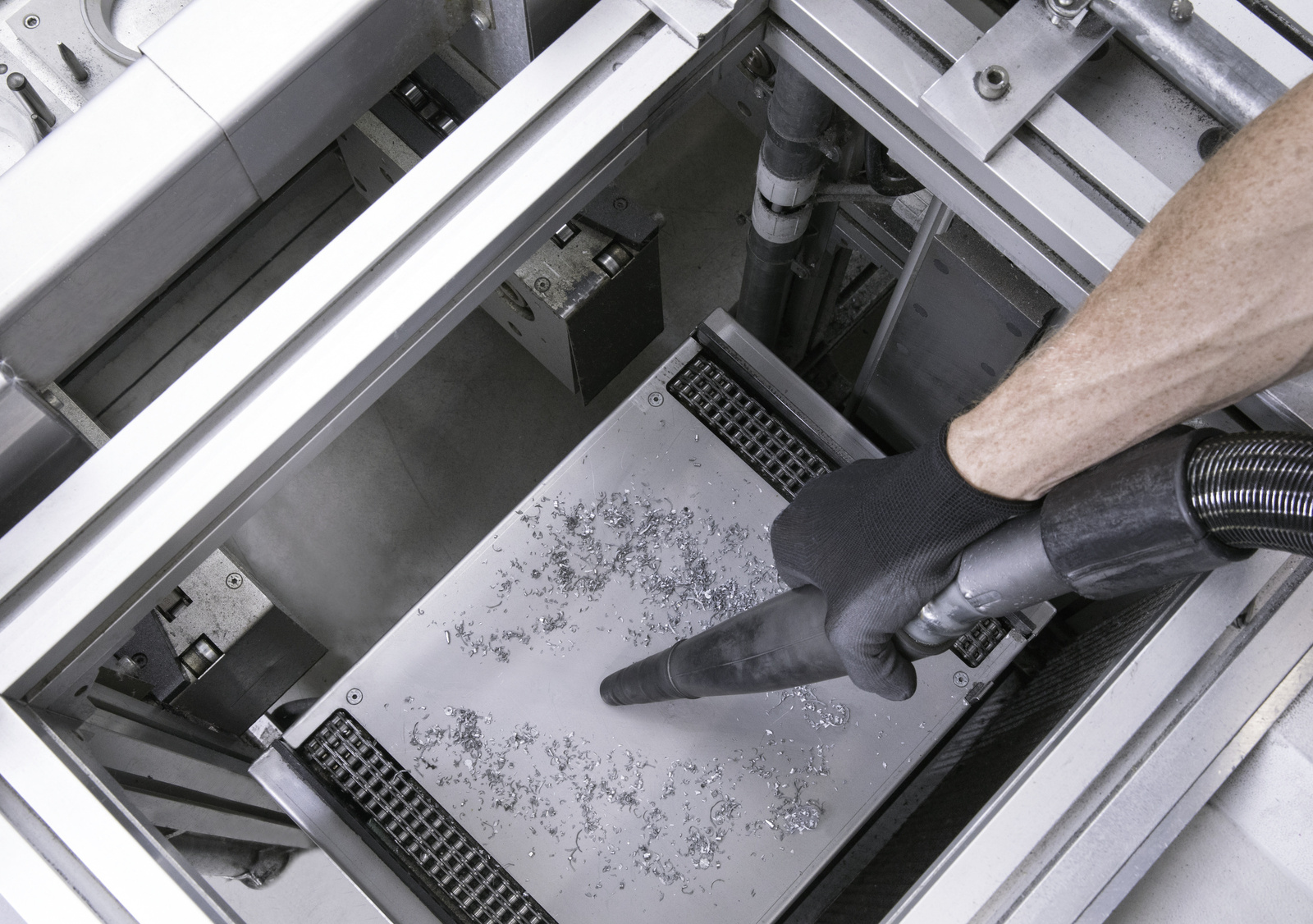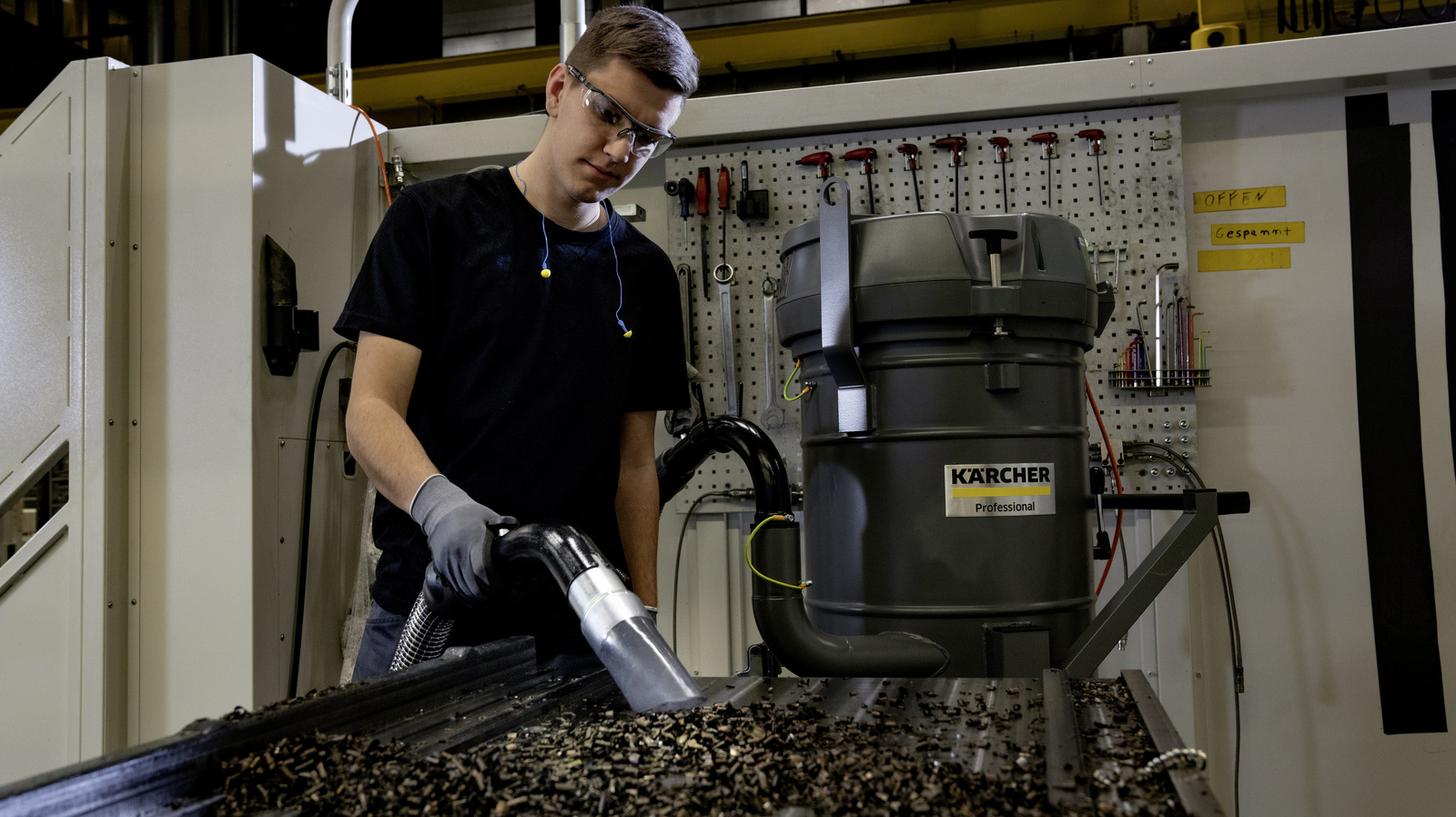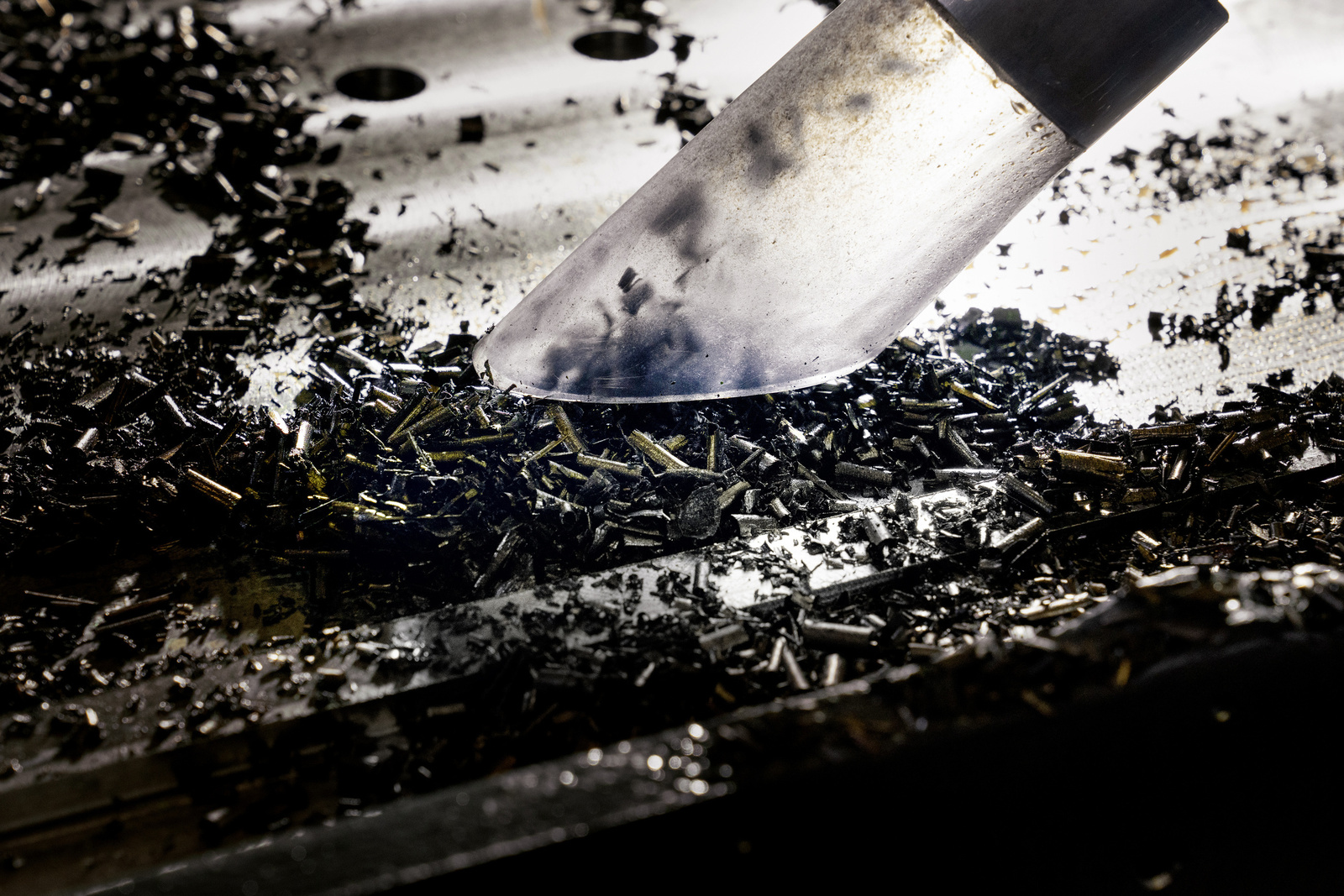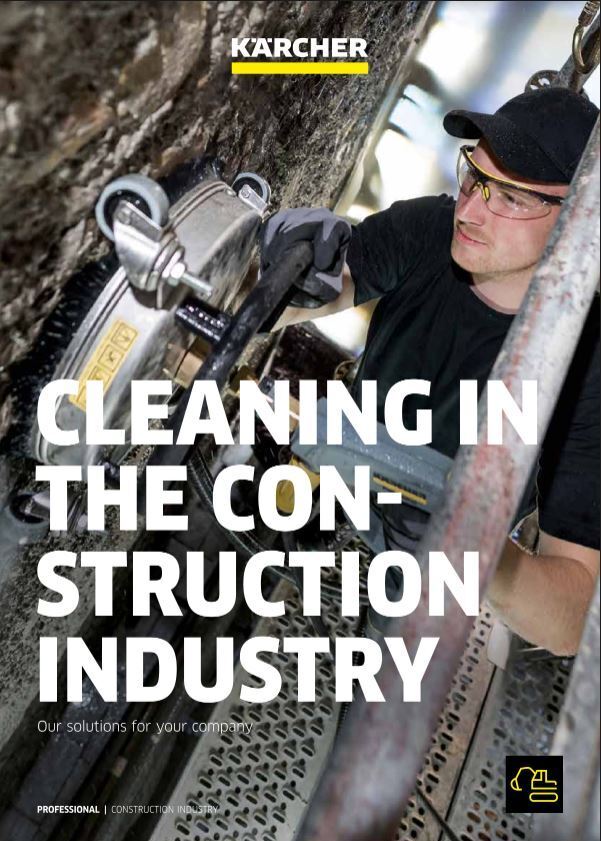Metal swarf and dust vacuuming
Swarf are an inevitable byproduct of metalworking, whether through automated production or manual machining. However, the accumulation of coarse metal chips can cause damage to expensive manufacturing machines and reduce product quality over time. In addition, when combined with coolant residues, swarf can create slippery floors, increasing the risk of accidents. To ensure the safety of workers and protect production infrastructure, regular removal of metal swarf from the work environment is crucial. Effective extraction systems or vacuum cleaners capable of handling metal dust should be used, equipped with the appropriate accessories to enable efficient and thorough cleaning.

Metal swarf in automated manufacturing
Automated manufacturing steps are common in metalworking for the automotive industry. While machines may have built-in extraction devices for metal dust, they may not remove all metal swarf from the process. Therefore, it's recommended to use suitable industrial vacuum cleaners to extract swarf effectively. This helps ensure a clean and safe work environment.
Why vacuum swarf?
Metal swarf falling from machines can cause accidents and block assembly lines, leading to production stoppages and damage to machines. Regular maintenance cleaning of the production environment with an industrial vacuum cleaner is recommended to extract metal dust and prevent such issues. Additionally, quick removal of coolant residues and swarf before quality control between work steps improves product quality.
The right vacuum cleaner for swarf in the production line
Industrial vacuum cleaners used in manufacturing plants must be compact and easy to maneuver to navigate through long assembly lines. Another option is to use a centrally positioned large vacuum cleaner with appropriately long hoses. In either case, the vacuum cleaner's components, including wheels and power cables, should be resistant to cooling lubricants.

Metal swarf in the workplace
Industrial vacuums are essential for ensuring safe working conditions and achieving high-quality results in metalworking, particularly in workstations where manual finishing of industrially manufactured components is carried out. These vacuums are designed to manually extract swarf, allowing workers to carry out their tasks safely and efficiently.
Why vacuum swarf instead of sweeping them off?
While vacuuming may seem unproductive, it’s actually a crucial step in metalworking. Brooms and compressors simply redistribute swarf, while a vacuum removes them completely. By doing so, the surface quality and dimensional accuracy of the components are maintained, preventing errors caused by swarf left on clamping devices. Vacuuming also prevents fine metal dust and cooling lubricant mist from entering the air, promoting employee health.

Tip – Vacuumed material is recycable:
Disposing of swarf and metal dust professionally is worthwhile since the vacuumed material is often recyclable and can even be profitable in large quantities. To improve the quality of the recycled material, chip shredders or separation systems can be used.
Which vacuum is suitable for swarf?
Compact and versatile vacuums are ideal for manual metalworking stations, with container size and power tailored to the amount of swarf being produced. Smaller containers are often sufficient, and short hoses are beneficial in tight spaces. It is also worthwhile to invest in various nozzles for floors and worktables.
Tip – Consider the noise level:
When selecting a vacuum cleaner for metalworking environments, it's important to consider the noise level. The machine should operate smoothly and quietly to avoid adding to the already noisy working environment.
Metal swarf in CNC machining
Industrial vacuum cleaners are a convenient tool for many medium-sized metalworking companies that operate CNC machines. These machines generate large quantities of swarf and cooling lubricants, which can be easily and rapidly removed from the production environment using an industrial vacuum cleaner.
Why is metal dust extraction important here?
Although occupational safety and product quality are important considerations for companies operating CNC machines, the primary focus of metal chip extraction is to maintain machine value and ensure high availability. Production downtime results in profit loss and presents a risk for the company.
What type of vacuum cleaner is suitable for metal swarf produced by CNC machines?
A sturdy vacuum cleaner that is impervious to cooling lubricants and can be used with flexibility in terms of its working radius is required for removing swarf and coolant from the production environment and machines. The container should be able to accommodate significant quantities of steel or aluminum chips, as well as the accompanying weight, while also allowing for ergonomic and easy emptying. Equipment that includes oil-resistant rollers is critical since oil is dispersed on the floor through aerosols.

EXCURSUS – Safe extraction of the finest metal dusts
Fine metal dust made of aluminum, magnesium, and titanium are frequently generated in fine metalworking and additive manufacturing processes, posing a risk of explosion if not handled with care. To ensure safety, it is necessary to inert the environment by introducing appropriate substances that prevent any chemical reactions. Only then can the metal dust be safely extracted. To achieve optimal results, a vacuum cleaner specifically designed for this purpose with high suction power should be used. One model on the market has a built-in wet pre-separation system and safely picks up potentially explosive fine dusts up to 15 µm in accordance with EN 60335-2-69 regulations.



